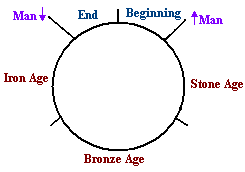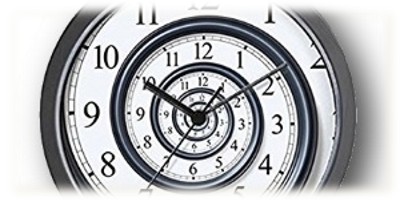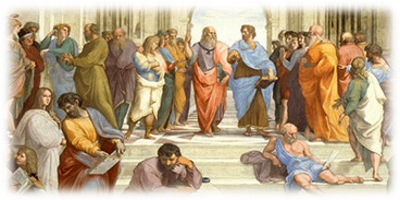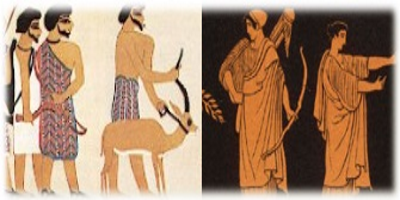The modern western mind views time as linear with a beginning and end. Whether you ascribe to the theory of evolution or creation, the timeline for planet earth is the same, a beginning and an end. The creationist views this span of time in the thousands of years with the beginning the creation of the earth by the hand of God and its destruction also by the hand of God. The evolutionist views this span in the billions of years with the beginning the creation of the earth through cataclysmic events and its destruction through another cataclysmic event.

Within this timeline both creationists and evolutions see the introduction and eventual destruction of mankind. The creationist sees a matter of days between the beginning and the introduction of man and days between the destruction of man and the end. The evolutionist sees billions of years between the beginning and the introduction of man and an unknown period of time between the destruction of man and the end.

The span of time between the introduction and destruction of mankind includes the advancement of man through the various ages. Again, the creationist and evolutionist ascribe different lengths of time between each segment, but agree on the degree of advancement.

Time spans of days and years can also be represented on a similar timeline with a beginning and end.


The Beginning and the End - Circular Time
Time is not linear it is circular. A clock is not a timeline but a circle for the simple reason that time does not begin or stop, it continues without beginning or end. In the same fashion days and years are also circular.

If the timeline above for the span of the earth and man is bent back onto itself, we create a circle of time. With a circular view of time our perspective on the beginning and end of the earth and man change. No longer is the beginning the beginning and the end the end, but a continual cycle of beginnings and endings. While this view of time is contrary to our western way of thinking, it is consistent with other views from other cultures. The ancient Hebrews of the Bible and the people of the orient have always understood time, the past, present and future, as circular.

How many of these cycles, or eras, have existed in the earth and man's past? In the Biblical text there are actually five cycles.
- Genesis 1:1-2 suggests that something existed prior to Genesis 1:1.
- The creation of Genesis 1:3 to the fall of man in Genesis 3.
- From the expulsion of man from the Garden of Eden, to Genesis 6 and the Flood.
- Genesis 10 with Noah and proceeding to beyond the modern time.
- The "New Heavens and New Earth" as prophesied by the prophets.
In each of these cycles we see a common theme. The creation or restructuring of the earth, the advent of man who populates and advances on the earth, the eventual downfall of man through his evil inclination and the destruction of the earth.
Beyond these five we can speculate on previous eras of man based on physical, textual and geological evidence. Physical evidence of man's achievements has, on a limited basis, been preserved in the archeological record. Textual evidence, which has been handed down from generation to generation, has been preserved through oral and written accounts of man's history. Geological evidence is preserved within the earth providing us with catastrophic events that have restructured the earth on numerous occasions.
Without Beginning or End
From the viewpoint of both the creationist and the evolutionist the creation of matter occurred at some point in the distant past. But, could matter have simply existed with no beginning? Does space have a beginning point? To contemplate this question for any length of time can be taxing on the mind. To consider that the universe continues to infinity is a difficult concept to grasp as our western minds are trained to think of all things having a beginning and an end. With the concept of circular time understood, can this same circular view of time be applied to space as well? If you begin walking in a westerly direction in a straight line from where you are right now and continued walking (if that were actually possible) when would you reach the end? While you are walking in a straight line your distance from the center of the earth never changes and you wind up walking in a circle. Is it possible to go in a straight line in space? If you get into a space ship and travel in a straight line, will you eventually end up in the same space as you started? I cannot answer these questions but a circular view of space and time changes how one understands space and time.
If we can remember that the destruction and re-creation of each cycle of the earth is circular, we can understand that any point on the circle is repeated over and over again. For instance, when man enters the Iron Age it is simply one point on the circle that is repeated time and time again. It is not the past, nor is it the future, it is the same point in time repeating itself. This continual rise and fall of man are the same concept as walking around the planet earth, one circle after the other but always coming back to the same point on the circle.
Circles upon circles
Both space and time exist as circles (Interestingly the Hebrew language uses the same words for space and time). Throughout the universe there are an infinite number of circles, some small and some large. The most obvious of these extremes are the orbits of atoms and solar systems. The repeating intervals of time, whether seconds or billions of years can also be represented by a circle.

There are other circles of time and space. We already mentioned the circular events of the day and year that continue over and over again. While our model above of the circular history of the earth and man are combined, they can be split into two separate cycles, the circular destruction and re-creation of the earth (eras of earth) and the circular rise and fall of mankind (eras of man). It is possible for several eras of man to exist within one era of the earth. The history of mankind is the interlacing circles of generations of people who live and die and nations that rise and fall time and time again. The earth circles the sun as the moon circles the earth. Entire solar systems rise and fall through creation and destruction.

Like what you’re discovering? Continue the journey from Bible reader to translator.
|






